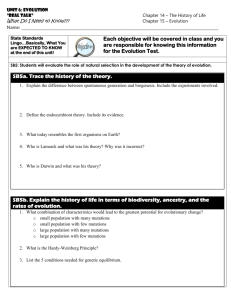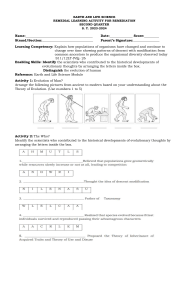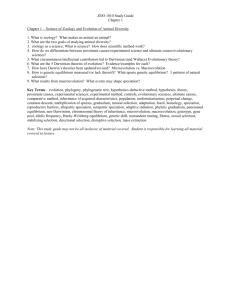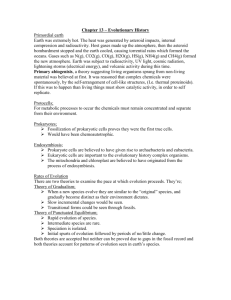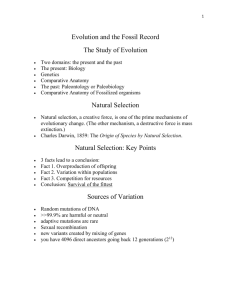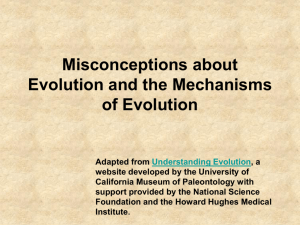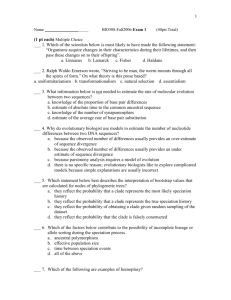Guided Reading of Evolution 101 (DOC)
advertisement
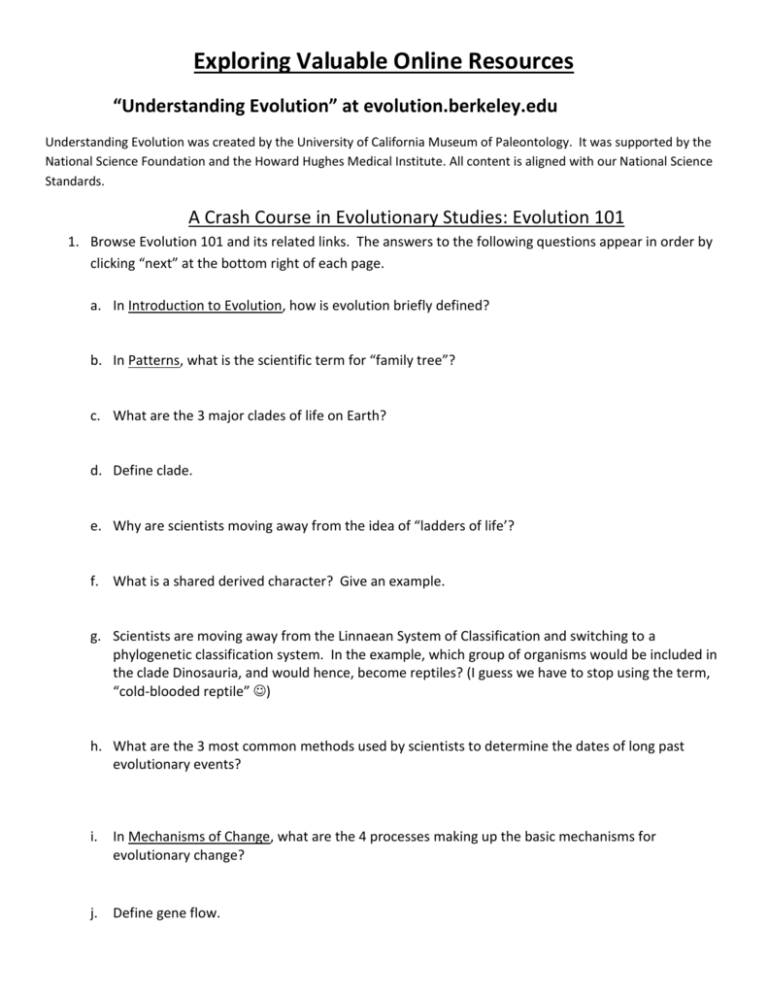
Exploring Valuable Online Resources “Understanding Evolution” at evolution.berkeley.edu Understanding Evolution was created by the University of California Museum of Paleontology. It was supported by the National Science Foundation and the Howard Hughes Medical Institute. All content is aligned with our National Science Standards. A Crash Course in Evolutionary Studies: Evolution 101 1. Browse Evolution 101 and its related links. The answers to the following questions appear in order by clicking “next” at the bottom right of each page. a. In Introduction to Evolution, how is evolution briefly defined? b. In Patterns, what is the scientific term for “family tree”? c. What are the 3 major clades of life on Earth? d. Define clade. e. Why are scientists moving away from the idea of “ladders of life’? f. What is a shared derived character? Give an example. g. Scientists are moving away from the Linnaean System of Classification and switching to a phylogenetic classification system. In the example, which group of organisms would be included in the clade Dinosauria, and would hence, become reptiles? (I guess we have to stop using the term, “cold-blooded reptile” ) h. What are the 3 most common methods used by scientists to determine the dates of long past evolutionary events? i. In Mechanisms of Change, what are the 4 processes making up the basic mechanisms for evolutionary change? j. Define gene flow. k. In Mutations, which mutations occur in non-reproductive cells and therefore will not be passed on to any offspring? l. In Sex and Genetic Reshuffling, what does sex introduce into a population? m. In Natural Selection at Work, what is being observed in the Galapagos Finches? n. In Sexual Selection, give 2 examples of sexual selection. o. In Coevolution, give 2 examples of coevolution. p. In Microevolution, define microevolution. q. How is evolution defined by biologists who study it at this small scale? r. In Speciation, define species and speciation. s. In Macroevolution, what percentage of species that have lived on this Earth have gone extinct? t. From The Big issues, is evolution progressive? Resource Library In the Resource Library found at the top of the homepage, identify any two topics, news articles, examples, or investigations you may find useful for your classroom. Teaching Materials a. Browse through the teaching materials available on this page. Under All-Level Resources, click on Dealing with objections to evolution and read how some of the concerns you may face in your classroom can be addressed to ease any discomfort among your students and their families. b. Lastly, under Correcting Misconceptions, identify 2 misconceptions you have dealt with in your own classroom.



